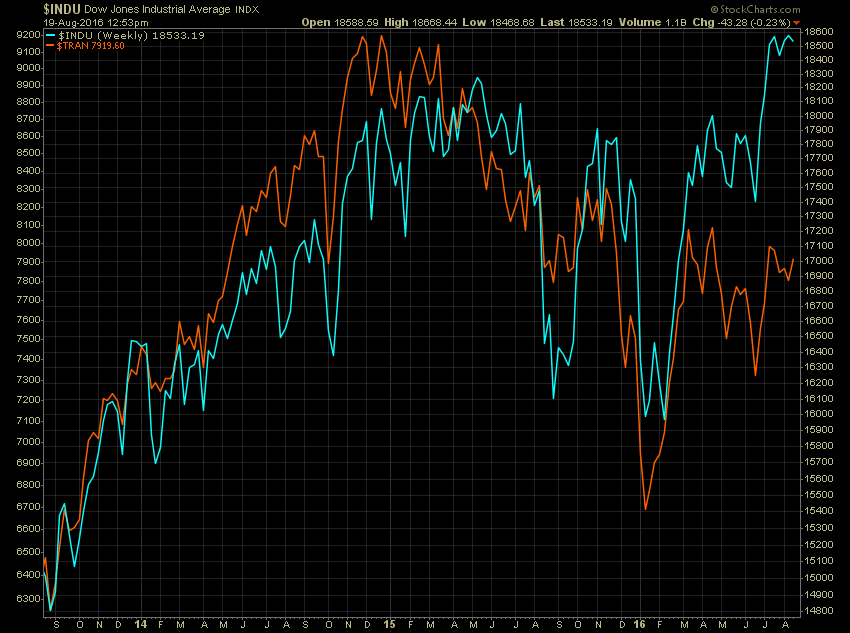A version of this post first appeared at The Felder Report PREMIUM.
While investors celebrate new highs in the major stock market indexes there is one fly in the ointment that nobody seems to be paying much attention to. In fact, many are hailing the breakout to new highs as the start of a new bull market but students of history and more importantly students of Dow Theory are not so sanguine.
Charles H. Dow, founder of the Wall Street Journal and Dow Jones & Company, was one such avid student of the markets and market history. In a number of editorials published in the Journal, he outlined many of the truisms he discovered through his many years of research. One of those has since been dubbed, “The Dow Theory.” Wikipedia explains:
To Dow, a bull market in industrials could not occur unless the railway average rallied as well, usually first. According to this logic, if manufacturers’ profits are rising, it follows that they are producing more. If they produce more, then they have to ship more goods to consumers. Hence, if an investor is looking for signs of health in manufacturers, he or she should look at the performance of the companies that ship their output to market, the railroads. The two averages should be moving in the same direction. When the performance of the averages diverge, it is a warning that change is in the air.
Though much maligned today as an outdated relic of an era long gone, this indicator is considered more of an economic than a technical one, as it most often used. Thus, a “change in the air” refers to an change in the business cycle more than the market cycle. But, because the latter usually coincides with the former, I find it useful in both capacities.
Right now the Dow Transportation Average sits well below its most recent highs set in late 2014. This glaring divergence from the Dow Industrial Average serves as a clear economic warning, according to Dow’s theory. Mark Hulbert recently reported in USA Today some interesting statistical findings regarding the research Dow did so many years ago:
This theory was confirmed statistically by the U.S. Department of Transportation. In a December 2014 study, that Department’s Bureau of Transportation Statistics reported that trend changes of the transportation sector between 1979 and 2013 led trend changes in the economy by an average of approximately four months. The Bureau based its study on the Transportation Services Index, which it calculates itself; that index hit its all-time high in July of last year.
So investors and economists alike would be wise to pay heed to the message being sent by the Transportation Average, particularly when that message is being confirmed by the retail sector, as well:
